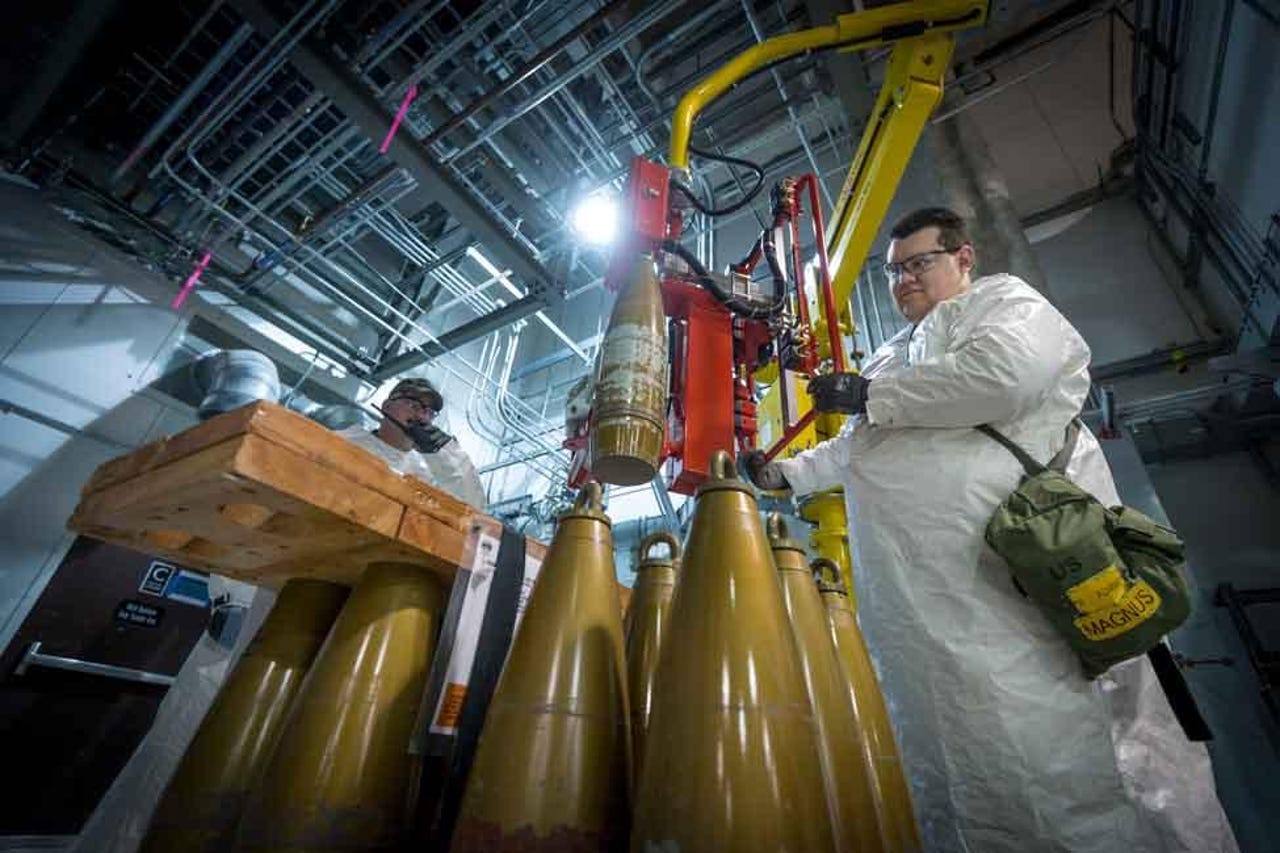Robots dismantle and neutralize 100,000 mustard agent chemical weapons


The Pueblo Chemical Agent-Destruction Pilot Plant, or PCAPP, in Colorado is celebrating the successful destruction of 100,000 munitions from a U.S. stockpile. Destruction of the munitions is required under the Chemical Weapons Convention, an arms control treaty signed by more than 165 countries globally, including the U.S. in 1997.
Until recently, chemical weapons were disposed of in a decidedly low-tech manner. In the late 1960s, under a program un-ironically named Operation Cut Holes & Sink 'Em (CHASE), thousands of tons of chemical weapons were dumped in the ocean. Many of those stockpiles are too fragile to be moved now, and shortly after the large-scale dumping of the '60s congress passed legislation prohibiting ocean dumping.
But that meant people had to do the dangerous work of dismantling and neutralizing aging chemical weapons. Until recently that was true, but it turns out the job has (thankfully) been outsourced to robots.
In fact, robots play a central role in the operations of the state of the art PCAPP facility, which took years to design and build and came online in 2016. In order to keep human workers safe, robots are tasked with removing explosive components from projectiles. Robots also access and drain the sulfur mustard, which is housed in a liquid form inside ordinance and causes horrific burns on the skin and in eyes and lungs.
The contract for the facility went to Bechtel, a global engineering, construction, and project management company. The key was to design a facility that could keep workers inside physically removed from the dangerous work.
"This milestone is a key step forward in achieving our mission here at PCAPP," says Bechtel Project Manager Bret Griebenow. "It is significant, and shows the operational ability of the plant, and our team, to safely and effectively destroy the remaining weapons."
At PCAPP, workers stand behind thick blast walls and teleoperate or oversea autonomous forklifts and robots. Once the munitions, which are palletized, clear a vapor check stage to ensure they're intact, humans are physically removed from the picture. The weapons move down a conveyor belt via a series of airlocks and end up in the hands of six-axis gripper robots originally designed for auto factories. Using a combination of incredible strength and repeatability down to a fraction of a millimeter, the robots physically dismantle the bombs by first removing the lifting lugs used to hoist them, then meticulously removing casings and parts one at a time.
Once the robots dismantle the projectile portion of the weapon, the sulfur mustard, which remains a liquid and not a gas, even when deployed, must be neutralized. This is done using hot water and a caustic solution that reverses the chemical process. The resulting wastewater is biotreated with microbes that digest and break the solution into brine. The metal munition bodies are super heated to clean them of residues before being shipped off for recycling.
PCAPP is concluding its pilot phase and is processing an average of 400 munitions per day. Once workers and robots at the facility work through the entire stockpile of chemical weapons at the U.S. Army Pueblo Chemical Depot in Colorado, where they're housed in temperature-controlled earthen igloos, it will shut down. That's expected to happen in 2023.
"As we conclude our pilot testing and move to obtain our final operating permit, we are excited to see increased and consistent productivity, reliability, and sustainability of our processes and procedures," said PEO ACWA Site Project Manager Greg Mohrman. "Achieving this milestone is a time to pause and document our successes, while continuing to focus on the safe destruction of the remaining stockpile."
So far, the facility has disposed of more than 500 tons of chemical agent, with a project goal of eliminating 2,600 tons of mustard agent. This is one case where robots are more than welcome to have the job.